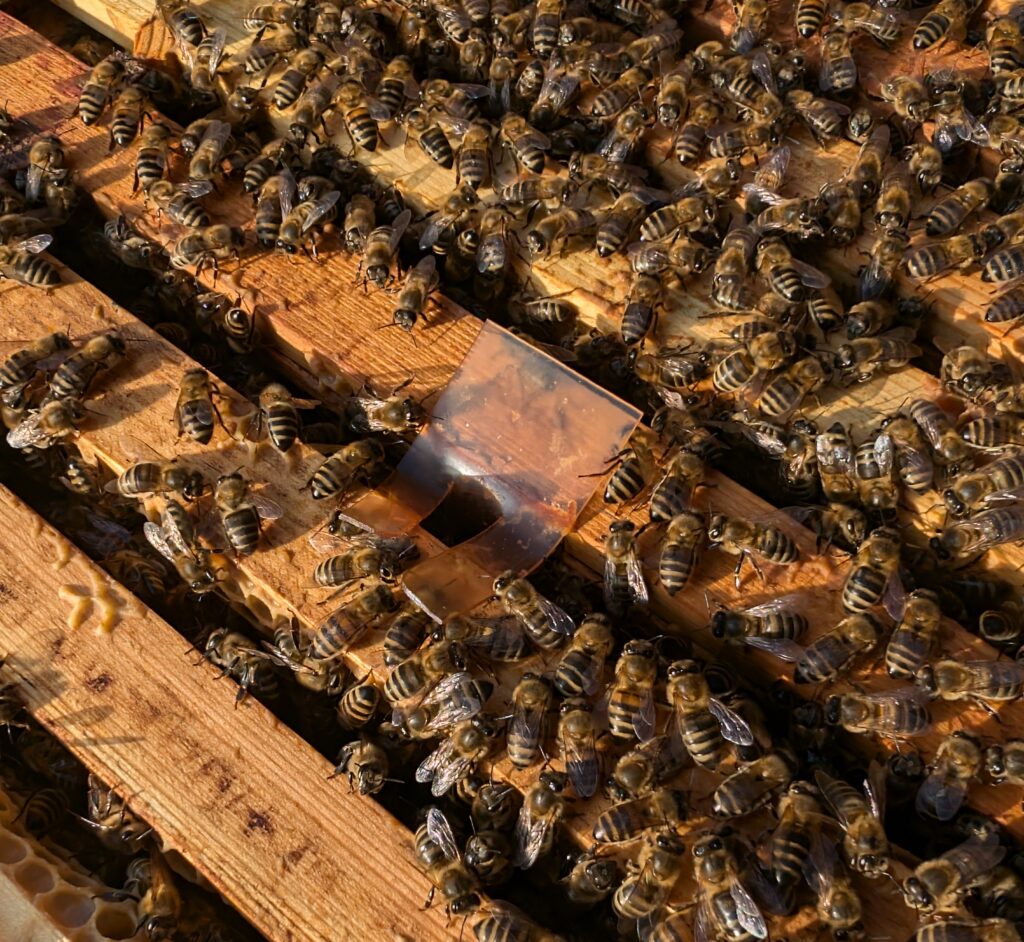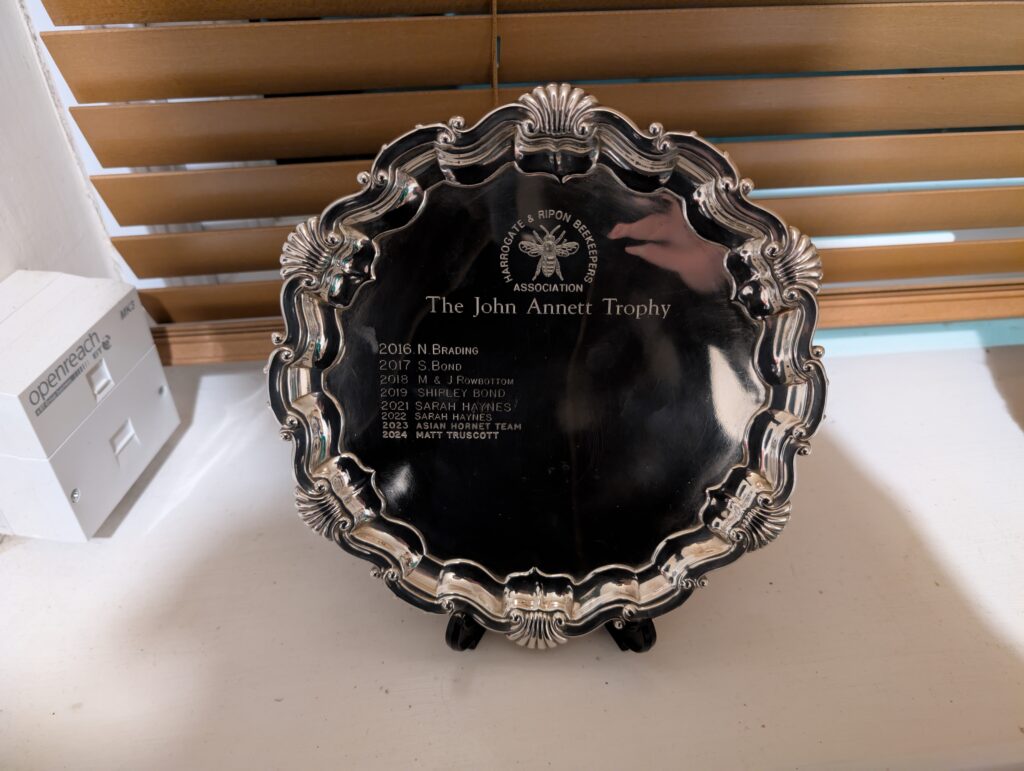Dreary January weather once again prevented Matt from spending much time with his bees. In mid-January, on the first day after the snow melted, he was finally able to visit his colonies and I was delighted to receive a message saying “The bees are still alive and happy ^_^”. It was the first mild day in quite some time, so Matt watched as bees buzzed to and from the hives on cleansing flights. He was as conscientious as ever about ensuring his bees do not starve and served up a fresh packet of fondant to the colony who had cleaned out the last one. Sadly, there were a few deceased bees caught in the mouseguards. Worker bees will usually remove their dead siblings from the hive, but the mouseguard can sometimes make it a difficult maneuver, so Matt served as a mortuary assistant. Don’t worry, these deaths were part of the natural life cycle and the colonies are still healthy and strong.
In Matt’s December diary entry, I mentioned that he was preparing to teach on the beginners course hosted by Harrogate and Ripon Beekeepers Association. In January, the tutelage began! Matt ran his first class on the 20th, teaching beekeepers in their second year of studies about bee anatomy, communication and navigation, mating and breeding, and hive inspections. On the 27th, Matt welcomed brand new beekeepers joining their first ever session and talked them through the basics of British beekeeping. This included making them aware of support networks, such as the British Beekeeping Association, and providing accurate information on what bees are and why they matter.
Between classes, Matt received news from the National Honey Monitoring Scheme. This is an organisation that analyses samples of honey sent to them from beekeepers. With the data they collect, they can monitor the environments bees live in and the challenges they may be facing from climate change and habitat loss caused by humans.
When beekeepers receive the results of their sample, they gain knowledge about the quality of their honey and from which plants their bees foraged. Matt learned that his 2024 sample was comprised of 84.5% sugar and 15% water. His colonies are doing exceptional work! The usual water percentage is between 15% and 20%, with the average being 18%. But the lower the water content, the better the honey, which means Actual Honey is goooooood.

You can see a record of the Actual Honey results here.

